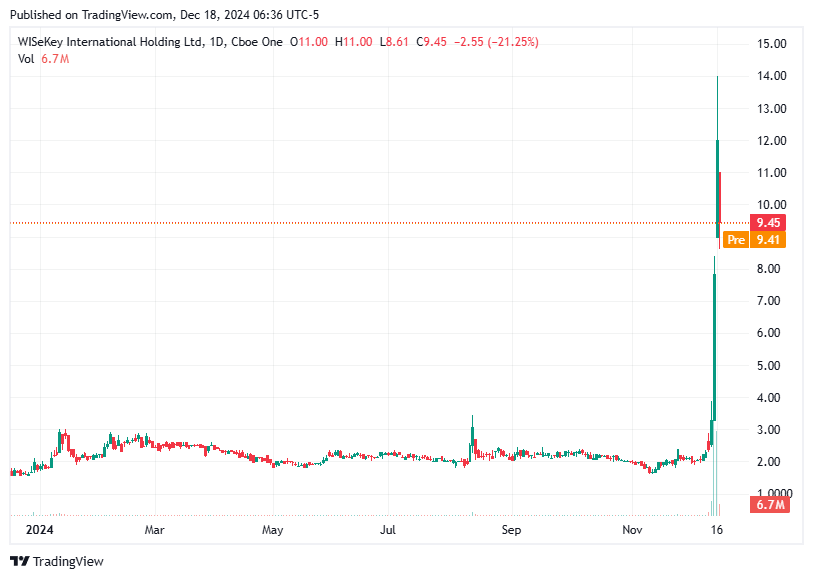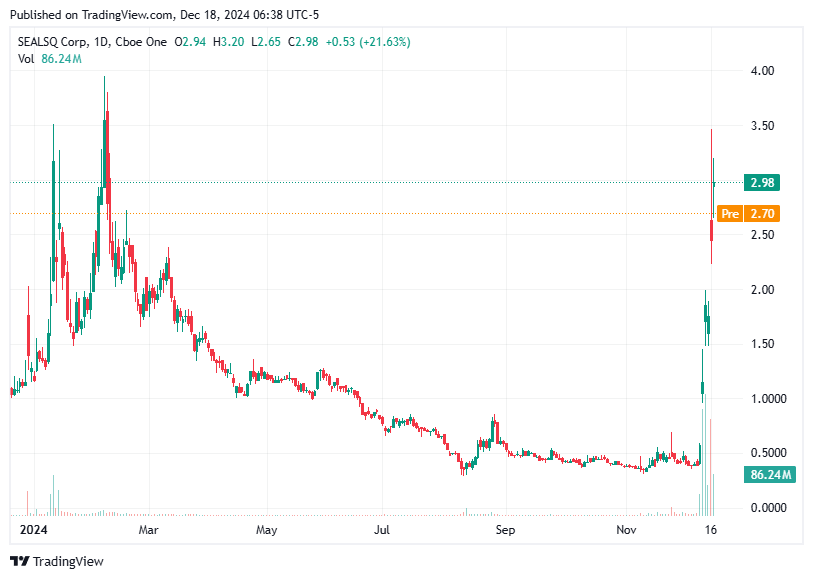WISeKey and SEALSQ: A Shield for the Digital World in the Quantum Revolution Era
Quantum RootKey – Post-Quantum Cryptography Innovations to Protect the Data
WISeKey International Holding Ltd ("WISeKey") (NASDAQ: WKEY) declares its mission to safeguard the digital world in the face of the impending quantum revolution. Honestly, who among us isn’t at least a little uneasy at the thought of quantum computers one day cracking traditional encryption methods? The company, in collaboration with the OISTE.ORG foundation, promises to introduce Quantum RootKey—the future of cryptography designed for the quantum era—by 2025.
What does this mean for us?
Simply put, traditional encryption methods like RSA and ECC are no longer as "ironclad" as they once seemed. Quantum computers have the potential to tackle problems previously thought impossible. WISeKey claims that Quantum RootKey will use post-quantum cryptography (PQC) algorithms—such as CRYSTALS-Dilithium and FALCON—to prevent disaster. And it’s not just talk. For example, using the OISTE/WISeKey Root of Trust (RoT) and its new PQC-PKI platform, the company promises to secure keys in hardware-protected environments like Hardware Security Modules (HSM) and Trusted Platform Modules (TPM).
Think about it: if this product delivers on its promises, it could be a game-changer for IoT, financial transactions, and even medical data. Imagine a billion IoT devices—from smart speakers to cars—communicating securely. But is one product enough? What’s next? After all, the world doesn’t stand still.
You need to see this:
Financial reports WISeKey International Holding Ltd
WISeKey’s vision and progress
WISeKey, along with its subsidiary SEALSQ (NASDAQ: LAES), is actively advancing its ideas. They’ve even launched a Quantum Lab to let companies and researchers test quantum-resilient digital certificates. Personally, this reminds me of the early days of the Internet when new technologies felt alien but later transformed entire industries.
Technological advantages? They’re impressive. In addition to quantum-resilient algorithms already approved by NIST, WISeKey emphasizes protection against physical attacks. They also offer authentication systems designed to meet future challenges. Still, the question remains: can they meet expectations?

Applications of Quantum RootKey
The potential use cases of Quantum RootKey sound like a futurist’s dream: IoT security, government data protection, patient confidentiality—it all sounds fantastic. But then, why do the company’s financials raise concerns? In the first half of 2024, their revenue dropped to $4.8 million from $14.8 million in the same period the previous year. Gross profit shrank to $0.9 million from $7.8 million. The reasons? Declining demand and high fixed costs.
Honestly, can we talk about triumph when their operating loss hit $8.9 million and net loss reached $10.8 million? Sure, they increased R&D investments to $2.4 million, which is commendable. But the question remains: will they have enough time and resources to survive this transitional period?
The SEALSQ angle
Their semiconductor subsidiary, SEALSQ, is testing its QS7001 platform and preparing for mass production in 2025. They’re collaborating with Hedera to integrate quantum-resilient solutions into blockchain. It sounds exciting, but these solutions take time. Investors might not be willing to wait that long.

The bottom line
WISeKey is walking a fine line. They’re betting on innovations in post-quantum cryptography and IoT, but current losses and financial challenges raise doubts. I can’t help but wonder: will they be able to turn their ambitious projects into real revenue? For now, their approach feels like a high-risk, high-reward game.
What do you think? Are these technologies and strategies enough for WISeKey to survive in a world where quantum computers are already starting to change the rules?



